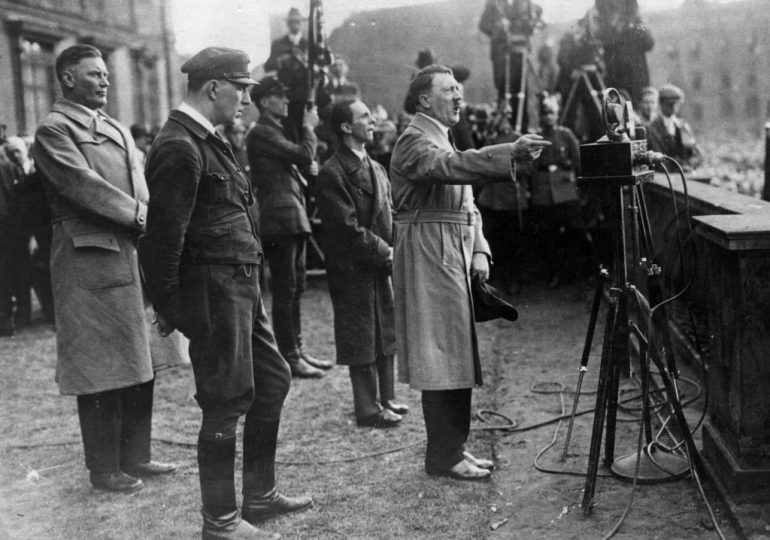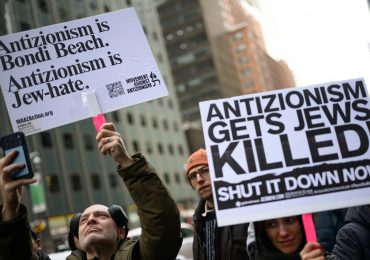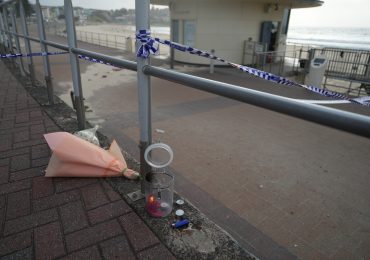Adolf Hitler never won a majority in a free and open national election. He never received more than 37% of the vote in a free and open national election, but he argued that 37% represented 75% of 51%, and demanded political power. It was the political calculus by which the Nazi leader disabled, then dismantled, the Weimar Republic. Hitler exploited his 37% to gridlock legislative processes, to cudgel or crush the political opposition, and ultimately to undermine the country’s democratic structures. When Hitler had vowed in court, in September 1930, to destroy democracy through the democratic process, a judge asked, “So, only through constitutional means?” Hitler replied crisply, “Jawohl.”
[time-brightcove not-tgx=”true”]
Hitler exercised his constitutional right to free speech and freedom of assembly to hold rallies across the country and spew invective in all directions—against Bolsheviks, social democrats, immigrants, Jews, even fellow rightwing nationalists. He chided the ruling elites. If God had intended aristocrats to run the country, Hitler said at one rally in fall 1932, “we’d all have been born with monocles.” He vowed to make Germany great again. He promised a Third Reich bigger and better than the previous two.
Hitler fomented outrage and discontent. He endorsed a public referendum backing the “Liberty Law,” proposed legislation that called for the abrogation of the Treaty of Versailles. The German signatories to the treaty were to be executed for treason, along with any government official who implemented the treaty’s provisions that included onerous reparation payments. It was reported, falsely, that the German government was drafting German teenagers and selling them into slavery abroad to service reparation debts. Hitler sowed lies and hatred, and harvested votes.
When he entered the race for president, in spring 1932—the only time Hitler ran for public office—he lost by six million votes, securing just 36.77% of the electorate. Hitler went to court to have the election results overturned amid claims of voter fraud, but the judge dismissed the case out of hand.
Hitler had more success with the legislative branch of government. The Nazis first entered the 600-member Reichstag in 1926 when they secured twelve seats in national elections. “We come not as friends and not as neutrals,” the brash, 32-year-old Reichstag delegate Joseph Goebbels warned at the time. “We come as mortal enemies.”
The Nazis remained an insignificant, back-row minority until September 1930, following the crash of 1929, when they surged tenfold in Reichstag elections, then doubled that number in July 1932 elections. With 230 brownshirt delegates with swastika armbands, representing 37.3% of the electorate, Hitler commanded the country’s largest political movement. Social democrats trailed with 21%, and the communists with 14%. A dozen other centrist and rightwing political parties filled the remaining seats in the Reichstag’s vast glass-domed and wood-paneled plenary hall.
The country’s largest political party generally had claim to the chancellorship, but President Paul von Hindenburg was concerned by Hitler’s divisive politics, hate mongering, and antisemitism. In private, Hindenburg said that if he were to appoint “that Bohemian corporal” to any position, it would be as Postmaster General, “so he can lick me from behind on my stamps.” Hindenburg told Hitler to his face that he would never appoint him chancellor “for the sake of God, my conscience, and the country.”
Undeterred, Hitler resorted to obstructionist politics. When he leveraged his 37% to gridlock the Reichstag, he forced Hindenburg to rule by “emergency decree,” a power guaranteed the president under Article 48 of the Weimar Constitution. Between December 1930 and April 1931, the Reichstag had enacted 19 pieces of legislation, with Hindenburg issuing only two Article 48 decrees. By the end of 1932, there were 59 “emergency decrees” compared with only five pieces of legislation. Writing in December 1932, a Time correspondent dryly observed that the German government appeared to be trying to “out-Hitler Hitler.”
Hitler had essentially and surprisingly quickly transformed a democratic republic into a constitutional dictatorship. Reichstag delegate Goebbels had observed a few years earlier, “The big joke on democracy is that it gives its mortal enemies the tools to its own destruction.” Finally, on January 30, 1933, Hindenburg relented, agreeing to appoint Hitler chancellor to overcome the legislative gridlock and restore democratic procedures. We all know what followed.
Back in the 1980s, as a graduate student at Harvard University, I was a teaching assistant for Dr. Richard M. Hunt in his core curriculum course, Literature and Arts C-45, that explored the moral dilemmas faced by the average German during the Weimar and Nazi eras. Harvard undergraduates facetiously dubbed an earlier incarnation of Hunt’s course, “Krauts and Doubts.”
In helping explain the Weimar Republic’s tilt into fascism, I used to cite an observation by Hans Frank, Hitler’s private attorney, who helped engineer the strategy to disable democratic processes through constitutional means. Frank became complicit in Germany’s wartime atrocities, including the murder of millions of Jews, for which he was hanged.
“The Führer was a man who was possible in Germany only at that very moment,” Frank observed while awaiting trial in Nuremberg after the war. Had Hitler come a decade later “when the republic was firmly established,” Frank said, it would have been impossible for him to have seized power. Had he come a decade earlier, the German people would have returned to the Kaiser. As it was, Frank said, Hitler came “at exactly this terrible transitory period” when the monarchy was gone and the thirteen-year-old republic was not yet secure.
I invoked the Frank temporal formula to contrast the fragility and ultimate failure of the thirteen-year-old Weimar Republic with the two centuries that Americans—more than ten generations—had had to forge the democratic values and processes that elevated the United States to a shining example for the world. Thirty years on, that contrast and claim seem frighteningly naïve.
As we approach the 250th anniversary of our nation’s founding, in July 2026, our republic appears to be plagued by the myriad ills that doomed Weimar—political fragmentation, social polarization, hate-filled demagoguery, a legislature gridlocked by partisan posturing, and structural anomalies in voting processes. The electoral college makes it possible, though highly improbable, that a political leader could come to power with just 37% of the popular vote, unless, of course, a third candidate could siphon significant numbers of voters from the two leading candidates.
It has been said that the Weimar Republic died twice. It was murdered and it committed suicide. There is little mystery to the murder. Hitler vowed to destroy democracy through the democratic process—and he did. An act of state suicide is less easily explained, especially when it involves a democratic republic replete with constitutional protections like freedom of expression, due process, and public referendum. As the November presidential election approaches, it is perhaps worthwhile to reflect on the lessons of Weimar and the potential consequences of electing a calculating and calibrating demagogue who promises to make the country great again.
Leave a comment








